 streettrucks
.
January 02, 2021
.
c10
streettrucks
.
January 02, 2021
.
c10
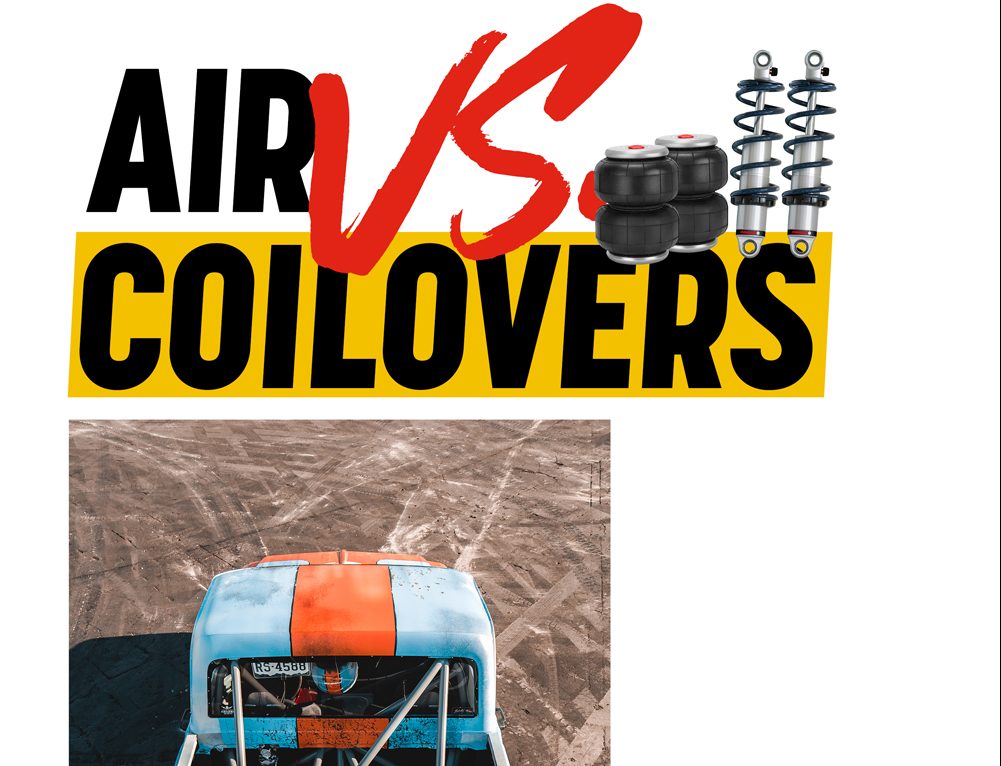
We talk a lot in this magazine about how to make your truck low, fast and cool. But the argument could be made that we don’t get into some of the more enjoyable things about owning a custom truck, and that’s driving it hard and fast through some corners. It’s not that we all don’t do it from time to time, even those of you with body-dropped trucks sitting on airbags. It’s just that it’s an underexplored topic.
So, let’s rectify that issue by talking about autocross as a sport. But, let’s also discuss one of the bigger questions that hits builders across the spectrum. Which suspension setup is better for driving your truck at an autocross event: airbags or coilovers? We know you’re curious, so we’re going to dive right in.
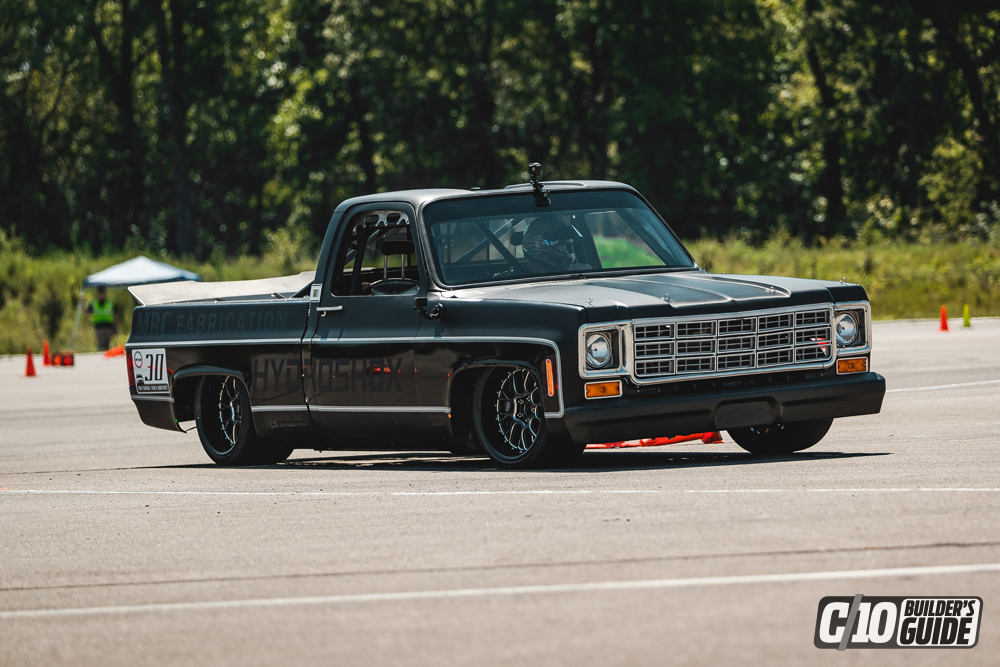 A Little Bit About Autocross
A Little Bit About AutocrossIf you’ve ever attended one of the Goodguys shows across the country or just been to an event with a bunch of cones and lines marked out, then you’ve probably seen what an autocross event is like. The basic concept is that a track is laid out onto a section of asphalt, and you have to go through the course as fast as possible in your vehicle. The goal here isn’t to take on other cars and trucks the way they do in NASCAR. Instead, you’re put into a class based on your body style, and then you compete against similar rides. Whoever does the fastest pass (or best out of a series of passes) wins.
 The Importance of the Right Suspension Setup
The Importance of the Right Suspension SetupIt may seem obvious, but if you want to throw your truck around a track, the right kind of suspension is a pretty big deal. Let’s think about how it all comes together.
We’ll begin with a simple example. Imagine you take a bone-stock F-150 and push it into a corner hard. The backend might break free, you could lose some traction or, if the road surface is slippery enough, go into a full-blown spin. You’ve probably been there, right? But why does that happen?
When you’re driving your truck straight, your tires are ideally making great contact with the road. When you turn into a corner, the body will lean, and the weight will transfer to the outside of the truck. The more lean you get, the less grip you have on the inside tires, which means you’re not getting as much contact with the road. Basically, your outside tires are doing all the work, and the insides, not so much. That helps turn that fast turn into a spin.
 One way to fix the problem is to beef up your suspension. Now you’re going to still have weight transfer—physics, and all that—but if your suspension is tight enough, the truck won’t roll as drastically. That means there’s more weight on those inside wheels, and therefore more traction.
One way to fix the problem is to beef up your suspension. Now you’re going to still have weight transfer—physics, and all that—but if your suspension is tight enough, the truck won’t roll as drastically. That means there’s more weight on those inside wheels, and therefore more traction.
There are lots of ways to help out. Sway bars are a common one. With the right set of sway bars mounted on your truck, you can get your body roll minimized pretty well. Better bushings are also an improvement. But the biggest thing you can do deals with your shocks and springs, and that’s where the controversy begins.
Coilovers are the track-proven veteran of the scene. They’ve been in race cars for years now. If you’ve never seen a set before, the idea is pretty straightforward: You’ve got a shock absorber with a coil placed over it, just like the kind of strut you’d find on your average Honda Civic.
So what’s the big deal? The main difference here is that a coilover is threaded. And that coil perch for the spring? It’s threaded too, making the ride height of your vehicle completely adjustable. All you need to do is jack up a corner and adjust the perch higher or lower, usually with a pair of wrenches, depending on your preference.
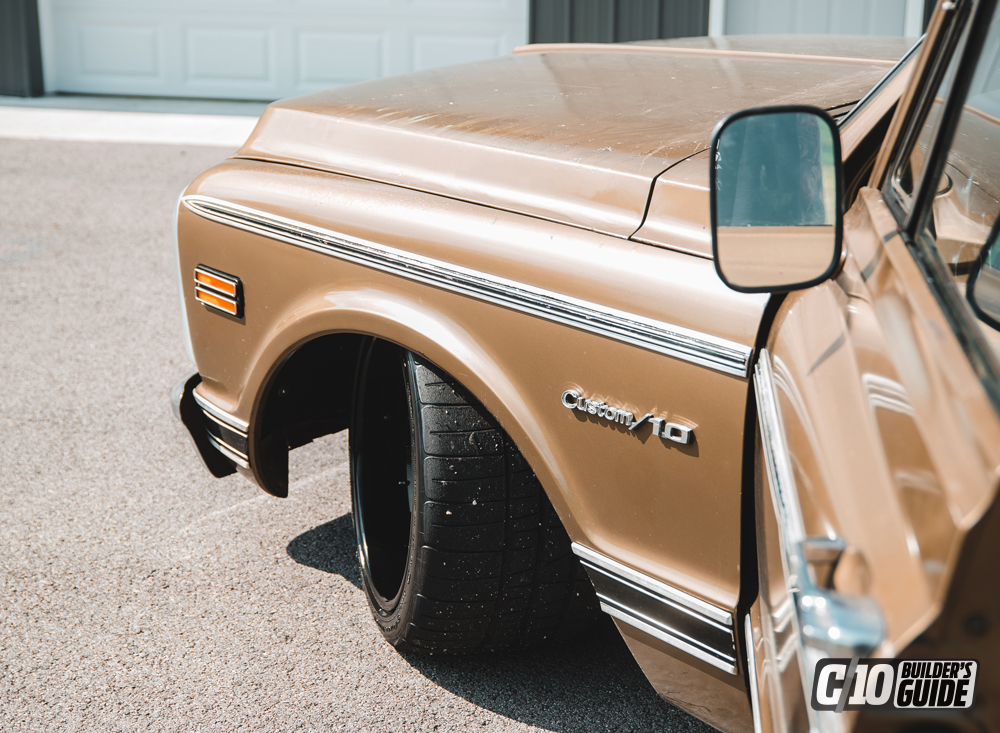 But why is that important? Simple. With coilovers, you can fine-tune your suspension within a millimeter of its life. Tweak the front-to-back and side-to-side weight ratios based on where you adjust the coils. And all it takes is a jack and a few wrenches. Easy, right?
But why is that important? Simple. With coilovers, you can fine-tune your suspension within a millimeter of its life. Tweak the front-to-back and side-to-side weight ratios based on where you adjust the coils. And all it takes is a jack and a few wrenches. Easy, right?
Sometimes, sure. But that dialing-in process isn’t always fast. You’ll want to use special four-corner scales to figure out exactly where everything needs to sit, and it’s not necessarily reproducible. Sure, you might not need it to be; every track is different. But if you did want to have just one preset ride height for a particular sequence, you just can’t do it.
If only there was a way to just push a button and set your truck at the height you wanted every time.
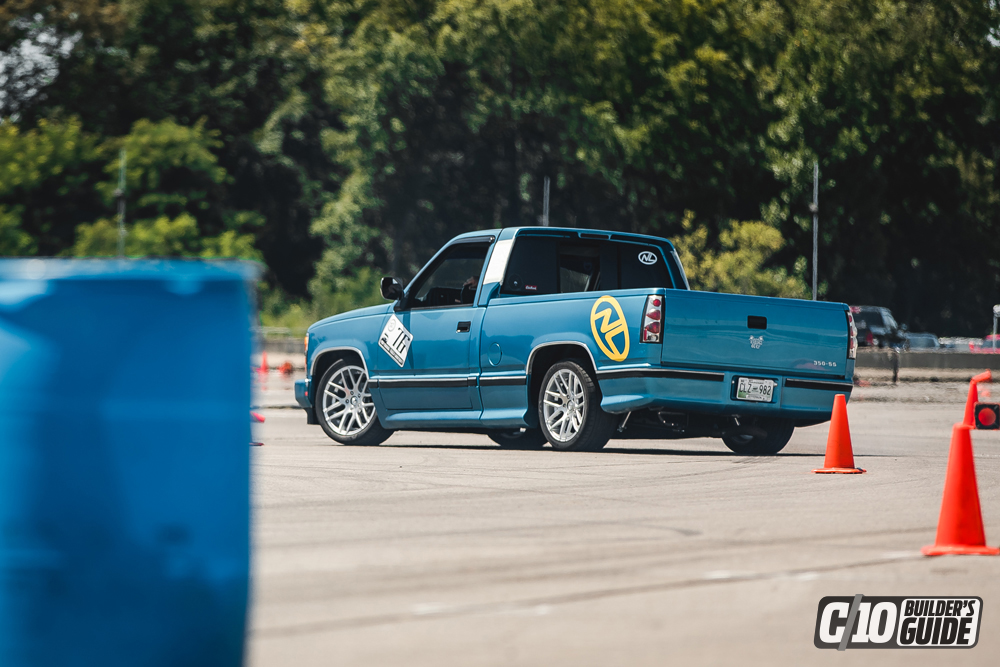 Airbags: Pros and Cons
Airbags: Pros and ConsOh hey, look: airbags. They’re an infinitely adjustable suspension system that lets you dial in exactly your ride height with the push of a button. OK, problem solved. Kinda.
Although we throw around the term “airbags” pretty regularly around here, technically they’re air springs. And springs have what’s called a spring rate. Basically, that’s the weight that you’d need to compress a spring down 1 inch. If you had a 400-pound spring rate on a coil spring, then when you put 400 pounds on the spring, it would compress 1 inch. And if this is a linear spring rate, then if you put 800 pounds on the spring, it would go down 2 inches. The spring rate is still 400 pounds; you just have 800 pounds on it. There are also progressive-rate coil springs that have different spring rates depending on how much weight is put on them, but you get the idea.
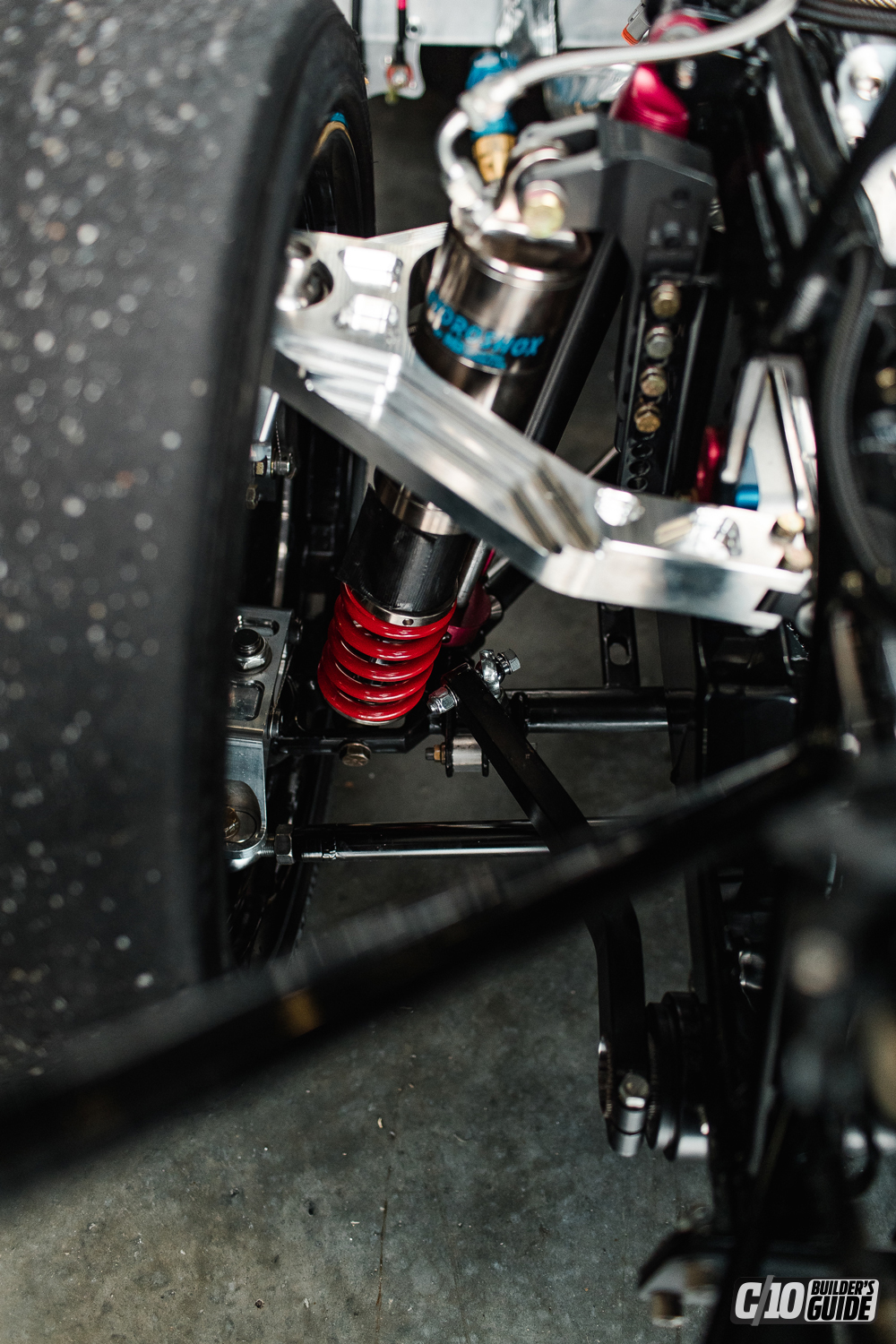 Now airbags have an adjustable spring rate that changes depending on the air pressure inside of the airbag. If you’ve ever driven in an air-bagged truck, then you probably know the deal already. If you’re rolling with a lower ride height (and therefore less pressure in the bag), then you’ve got a soft ride. Lock it up, and it’s pretty stiff.
Now airbags have an adjustable spring rate that changes depending on the air pressure inside of the airbag. If you’ve ever driven in an air-bagged truck, then you probably know the deal already. If you’re rolling with a lower ride height (and therefore less pressure in the bag), then you’ve got a soft ride. Lock it up, and it’s pretty stiff.
Therefore, airbags are the perfect setup for autocross events, right? Well sure, but not on their own. There are other things to consider, mainly the shock absorbers. These too need to be dialed in to match your suspension requirements. With a coilover, it’s all part of the package. But airbags on trucks are typically installed separately, so you need to get the right set of shocks to work with your bags. Something adjustable will fit the bill nicely there.
You’ll also need to do a lot of testing with an air-bagged truck, just like you would with coilovers. Scales still come into play, and you may have to make a few practice passes to dial things in just right. But that’s all part and parcel of the process.
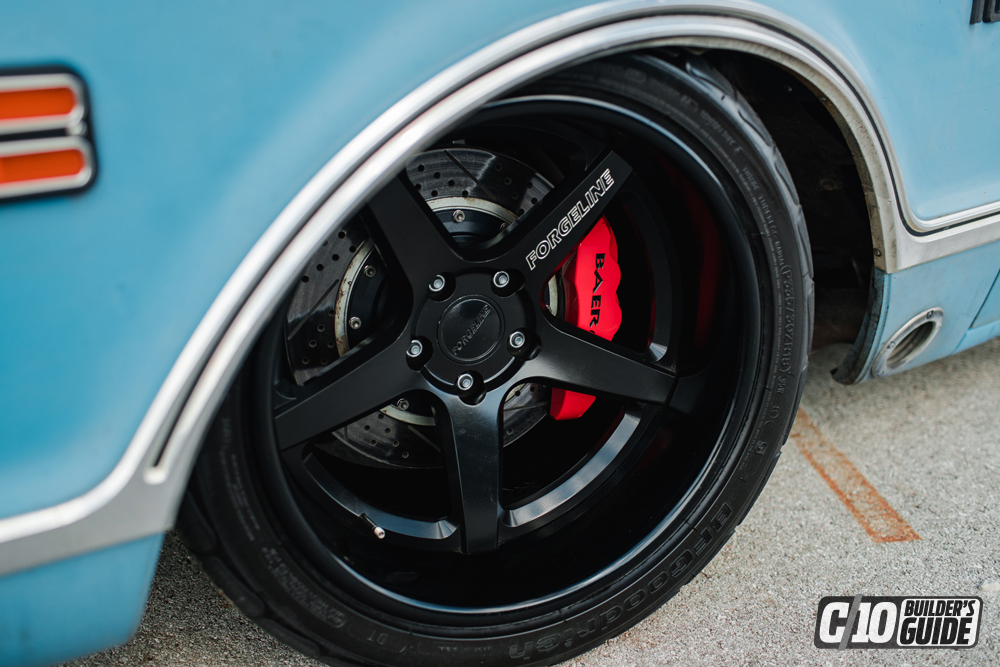
 So, Which One is the Best?
So, Which One is the Best?Ultimately, this comes down to personal preference. But really, if you want to see it in action, AirLift Performance has a great video on YouTube called Air Suspension vs. Coilovers (https://youtu.be/7dQgT5g84ag). In it they take a few different cars and go between coilovers and airbags in each of them. Even though it’s six years old now, the video still makes a solid point.
Oh, but which one wins? The airbags, every time.
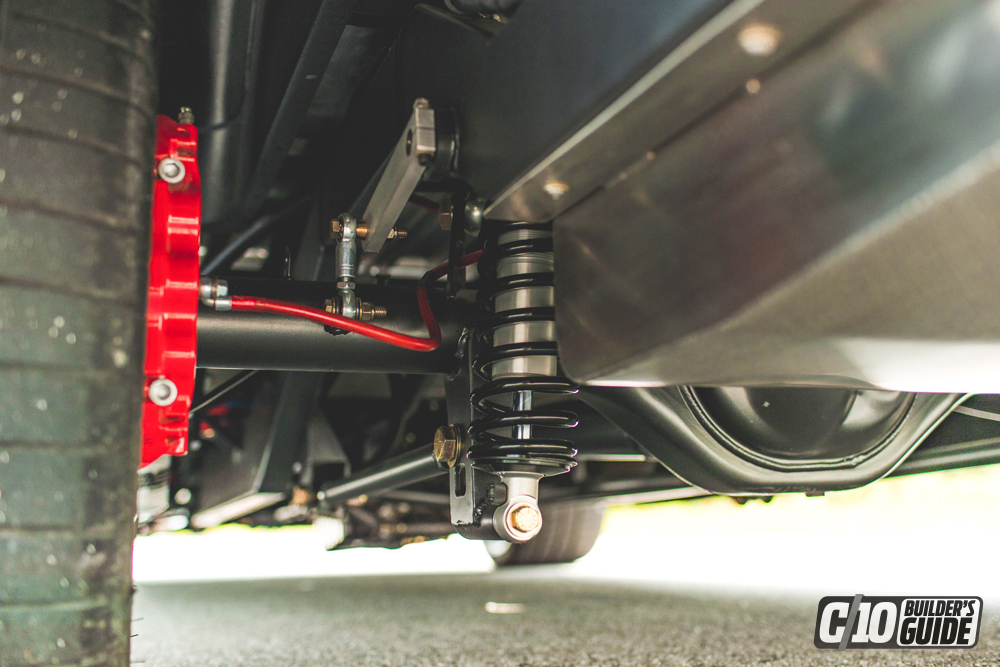



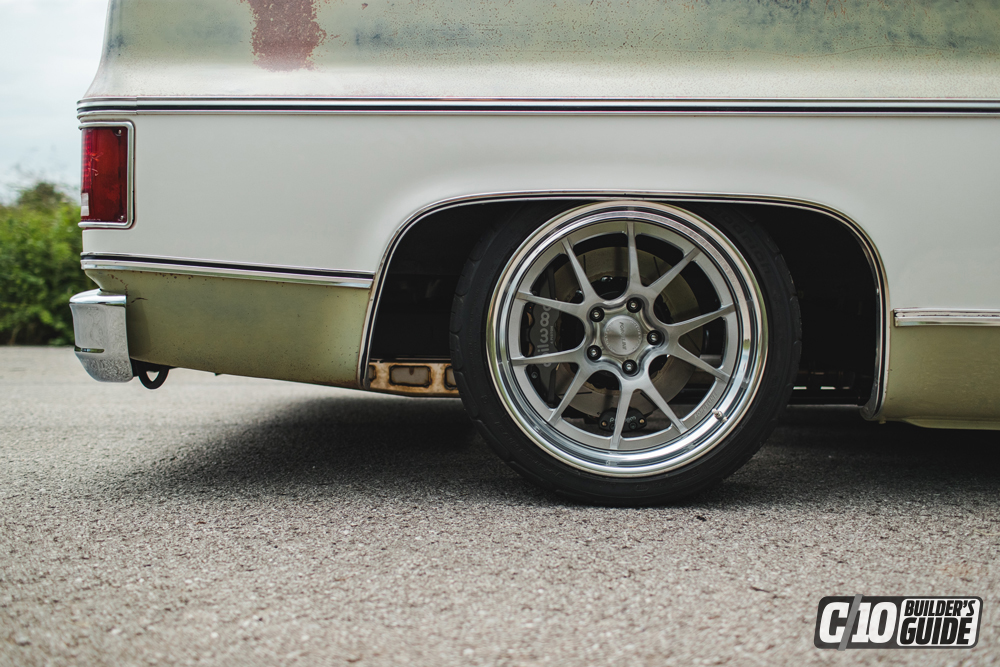


Share Link